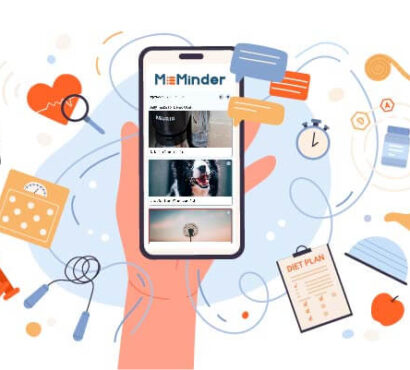A study by Eleftheria Vaportzis, Maria Giatsi Clausen, and Alan J. Gow looked at the perception of elderly adults and their perception of technology. Surprisingly, they found that in many cases, the elderly were very happy and willing to adopt new technology, devices, and programs. Post-introduction of the technology, however, a lack of support, information, and assistance hindered them from adopting the technology and incorporating it more fully into their lives.
In general, anyone with an intellectual disability may face challenges due to a combination of things such as mental fatigue and wavering from routine. Therefore, the consumer may be fearful of change, or anything that may disrupt their normal routine.
Technology is bringing new opportunities to consumers with dementia, down syndrome, and other intellectual disabilities; helping them live more rich, productive and independent lives. For that reason, we’ve compiled a list to help you approach the technology divide and set your consumer up for successful technology adoption.
Starting Off On the Right Foot: A Purposeful Introduction to Technology
In the words of Maria Montessori, creator of the Montessori approach to learning, “What you do for me, takes away from me.” (ie, When you do things for me, you are taking away my opportunity to do for myself.) Positioning the technology as a bridge to consumer independence and empowerment and why that is important is the best way to start the learning process off on the right foot.
Keep the pitch simple, for example, “This is your new ______________, we are going to help teach you how to use it so you can ________________ for yourself.”
Set aside plenty of individual learning time to teach the technology to the consumer; taking in mind that lengthy lessons will only frustrate and tire both dementia and ID consumers. Rule of thumb: small bites, chewed slowly.
- Break down the topic; introducing one topic at a time.
- Keep it simple. Stick with simple words. Have the consumers describe the process for clarity and understanding.
- Repeat each message several times. Consumers tend to remember what they see and hear at the beginning of each topic if it is repeated again at the end.
- Allow consumer plenty of opportunities to give their feedback or ask questions.
- Offer encouraging feedback with every step in the process.
- As mentioned, limit lesson to no more than one hour. Less if you see fitting.
- Demonstrate. Have consumers demonstrate what they know after the lesson. (They may act as though they understand by smiling and nodding, but that does not mean they are learning.
- Use incentives as teaching tools. It will provide motivation and reinforcement for lessons learned.
Every person, caregiver and situation will differ. However, the basics of effective adoption remain the same. Offer help that is tailored to the person who needs it. Some ways that you can do this are as follows:
- Answer their questions to the best of your ability
- Demonstrate what the new piece of technology is supposed to do
- Show them how it will benefit their life/make things easier
- Find them user guides on the Internet and tutorials
- Provide them with resources to learn more
- Be available to them when they experience technology problems
By offering individualized and caring assistance, you enable your loved one or charge to feel empowered and capable. This goes a long, long way in breaking down the fear of technology as a whole as well as increasing retention.
On an individual level, it can be life changing. Not only has a better system been implemented, but the consumer has accomplished a major learning milestone! If we can identify why people are afraid of technology and help them overcome these fears, we will go much further and faster in creating ability for countless people around the world and the studies have shown just how critical the adoption phase of technology truly is.
At CreateAbility, we are here to ensure that our product not only helps your consumer build or keep their independence; but that they have a smooth transition throughout the adoption phase that increases the sustainability of its usage into the future. Made with simplicity in mind, CreateAbility also has an arsenal of instructional materials and online demos for your reference. We also have a committed staff who supports your success as their own mission to help you with any additional questions. (That’s right…live people that are here for you to communicate with!)
Until next time!



